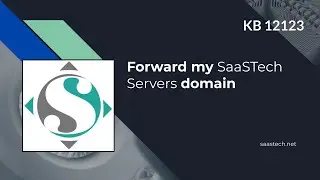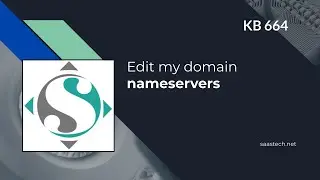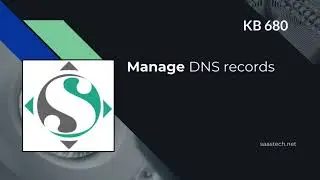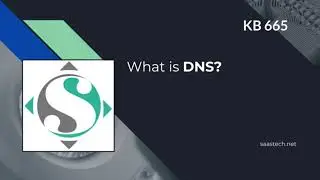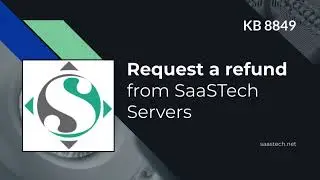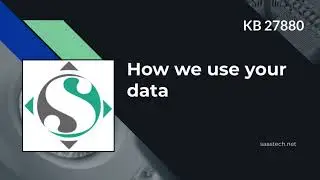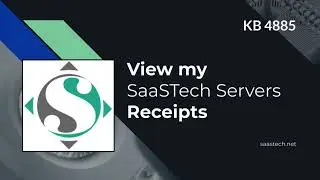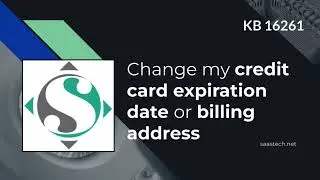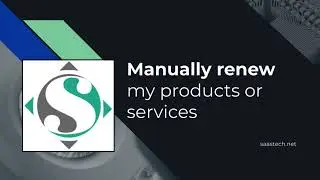What is DNS? (Domain Name System) - KB 665
What is DNS? http://kb.saastech.net/665
So, what is DNS and why is it important?
Okay, but how does DNS really work?
The query: It all starts when you type a domain name, like coolexample.com, in the address bar of your web browser. After entering a domain, a query begins looking for the IP address of coolexample.com so your browser can display the correct content. The query starts by checking the root server to see where to go next.
The root servers: There are 13 root servers working across the world, and they know all the DNS information of all domains. The root server looks through that DNS info to determine where to look next: the TLD nameserver.
TLD nameservers: The TLD, or top-level domain, is the last part of a domain name, such as .com in coolexample.com. Some of the most common TLDs are .com, .net, and .org, and some of the most popular country-specific TLDs are .uk, .ca, and .au. All TLDs have a specific TLD nameserver that stores the DNS info for that specific TLD. So, if I want to visit coolexample.com, the original query needs to check the .com TLD nameservers to find the domain nameservers for coolexample.com.
The domain nameserver: This is where you'll find the DNS zone file for coolexample.com, and the zone file is where you'll find individual DNS records. These records, such as A records, MX records, and subdomains, can be added, edited, or deleted in the zone file. The original query will look in the domain nameserver to find the A record for coolexample.com, which is mapped to a specific IP address. This IP address is what our query will use to retrieve and display the website content for coolexample.com in your web browser.
Keep in mind that there are a few different stops DNS can take along the way, and sometimes things get stuck or don't work like we expect. And it can take up to 48 hours for DNS changes to show up on the internet globally. If you'd like more detail about how DNS works, check out this handy guide from Verisign. http://kb.saastech.net/665
A little more about nameservers...
There are always at least two nameservers for a domain, and when nameservers are changed, the place where you manage DNS also changes. For example, if the domain is using default SaaSTech Servers nameservers, the DNS zone file will be in your SaaSTech Servers account. But if the domain is using nameservers for a different company, the DNS zone file will be with that company instead.
What do I need to do with my DNS?
Now that you know a little about what DNS is and how it works, you're ready to start using DNS in your SaaSTech Servers account. The easiest way to access your DNS is to sign in to your SaaSTech Servers Domain Portfolio, click or tap directly on your domain name and then select DNS. You should see your DNS zone file now, which is where you'll—you guessed it—manage DNS for that particular domain.
From here, you can take on some of the most common DNS tasks:
Connect your domain to your website by editing your A record, the record that determines what happens when someone enters your domain in their web browser by mapping your domain to an IP address.
If you already built a website somewhere else, or you'd like to connect your domain to your X (formerly Twitter), YouTube, or TikTok account, then domain forwarding might be the best option.
Make sure your emails get delivered to the right account with correct MX records.
Creating a separate online store where folks can shop for your products? Add a subdomain that points to the IP address of your online store, or add a subdomain that points to another domain.
And if you're setting up DNS somewhere else or using advanced DNS functions, change your nameservers to move your zone file to the other company.
Most DNS updates take effect within an hour, but could take up to 48 hours to update globally.
What if I get stuck?
We get it—there are a lot of moving parts to managing DNS for your domains, and it can get confusing. We've worked hard to create a seamless experience when managing DNS, and we're always working to improve. If you get stuck or have questions, we have help articles to walk you through DNS tasks, and our award-winning . customer support teams are just a chat or call away.
• How to Contact SaaSTech Servers - saa...
Related step
-Now that you know the basics of DNS, you can start managing your DNS settings in your account. http://kb.saastech.net/680
More info
Ready to see DNS in action? Begin your online adventure with our do-it-yourself Website Builder. http://kb.saastech.net/24708












